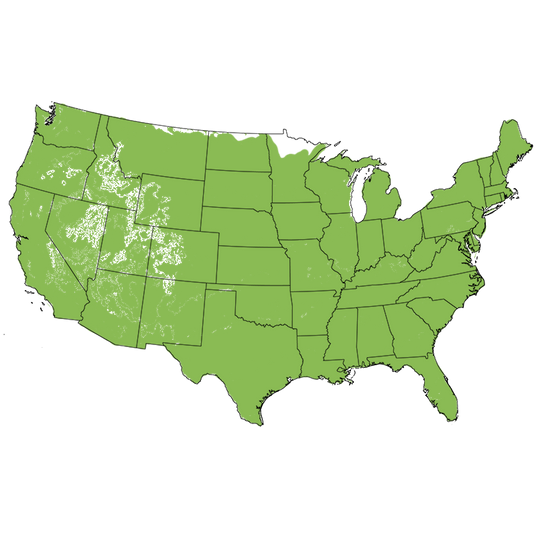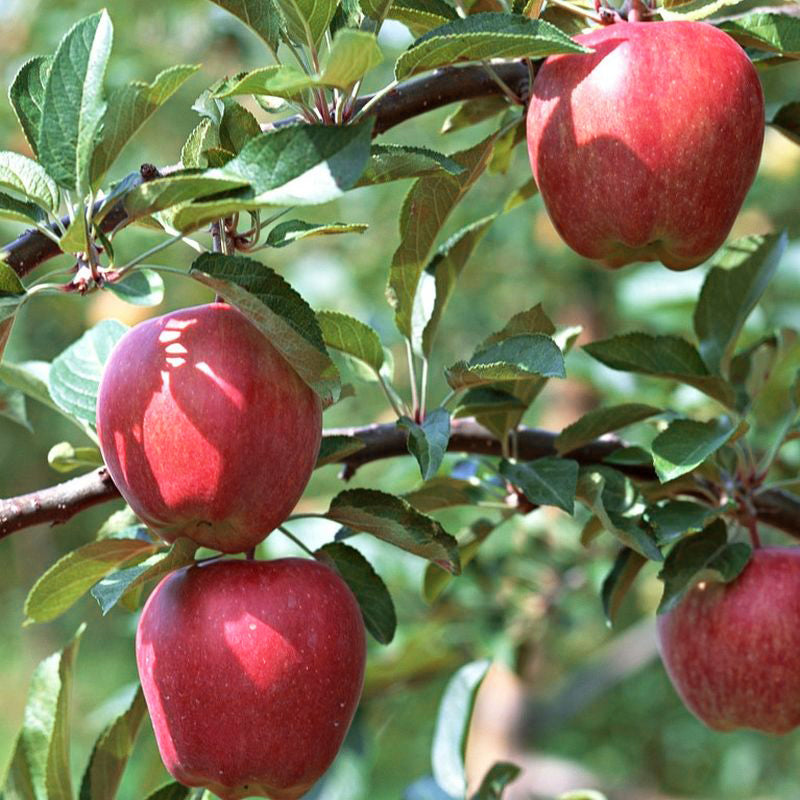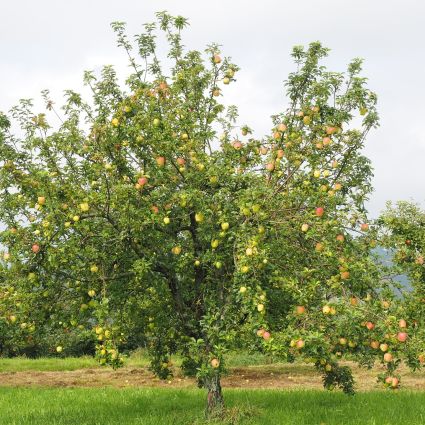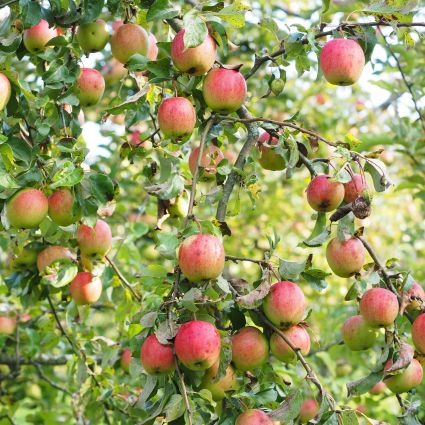Gala Apple Tree
Malus 'Gala'
- Stay Protected with Plant Sentry ™
Gala Apple Tree - #2 Container 3-4 Feet Semi Dwarf is backordered and will ship as soon as it is back in stock.
Plant Sentry™
Plant Sentry™

Plant Sentry™ Protected
Your order is protected by our compliance system that:
- Prevents restricted plants from shipping to your state
- Ensures plants meet your state's agricultural requirements
- Protects gardens from invasive pests and diseases
Delivery and Shipping
Delivery and Shipping
Delivery and Shipping
Fast, Safe Plant Delivery
Ships in 3-4 business days • Tracking provided • Weather protected
| Under $50 | $9.99 |
| $50 - $99.99 | $14.99 |
| $100 - $149.99 | $16.99 |
| $150 - $198.99 | $24.99 |
| $199+ | FREE |
✓ Zone-specific timing • ✓ Professional packaging • ✓ Health guarantee
Understanding Plant Options
Nature Hills offers plants in two main formats:
- Container Plants: Grown in pots with soil, sized by container volume and plant age
- Bare Root Plants: Dormant plants without soil, sized by height measurements
Container Plant Sizes
Container sizes indicate plant age and growing capacity rather than liquid volume equivalents. Our containers follow industry-standard nursery "trade gallon" specifications, which differ from standard liquid gallon measurements.
Young Plants (6 months to 18 months old)
| Container Size | Actual Volume | Metric Equivalent |
|---|---|---|
| 2" x 2" x 3" | 0.18 - 0.21 dry quarts | 0.20 - 0.23 dry liters |
| 4" Container | 0.31 - 0.87 dry quarts | 0.35 - 0.96 dry liters |
| 4.5" Container | 0.65 dry quarts | 0.72 dry liters |
| 6" Container | 1.4 dry quarts | 1.59 dry liters |
| 1 Quart | 1 dry quart | 1.1 dry liters |
| 5.5" Container | 1.89 dry quarts | 2.08 dry liters |
Established Plants (18 months to 2.5 years old)
| Container Size | Actual Volume | Metric Equivalent |
|---|---|---|
| 2 Quart | 2 dry quarts | 2.2 dry liters |
| #1 Container | 2.26 - 3.73 dry quarts | 2.49 - 4.11 dry liters |
| 5" x 5" x 12" | 3.5 - 4.3 dry quarts | 3.85 - 4.74 dry liters |
Mature Plants (2-4 years old)
| Container Size | Actual Volume | Metric Equivalent |
|---|---|---|
| #2 Container | 1.19 - 1.76 dry gallons | 5.24 - 7.75 dry liters |
| #3 Container | 2.15 - 2.76 dry gallons | 8.14 - 12.16 dry liters |
Large Plants (3-5 years old)
| Container Size | Actual Volume | Metric Equivalent |
|---|---|---|
| #5 Container | 2.92 - 4.62 dry gallons | 12.86 - 20.35 dry liters |
| #6 Container | 5.25 - 6.01 dry gallons | 23.12 - 26.42 dry liters |
| #7 Container | 5.98 - 6.53 dry gallons | 26.34 - 28.76 dry liters |
Bare Root Plants
Bare root plants are sold by height from the root system to the top of the plant. Plants may exceed minimum height requirements.
Common Sizes:
- Trees: 1 foot, 2 feet, 3 feet, 4 feet, 5 feet, 6 feet
- Shrubs & Perennials: 1 foot, 18 inches, 2 feet
Important Notes
Container Volume Specifications
- Trade Gallon Standard: Our containers follow industry-standard "trade gallon" specifications established by the American National Standards Institute (ANSI Z60.1) for nursery stock
- Volume Variations: Actual soil volume may vary due to plant root systems and growing medium settlement
- Age Indicators: Container size primarily indicates plant age and maturity rather than liquid volume equivalents
Growing Conditions
- Plant size can vary based on variety and growing conditions
- Container size helps indicate plant maturity and establishment level
- Larger containers generally mean more established root systems and faster landscape establishment
Seasonal Availability
- Bare root plants are available seasonally when dormant
- Container plants are available throughout the growing season
- Specific varieties may have limited availability in certain sizes
Questions?
For questions about specific plant sizes or availability, please contact our plant experts who can help you choose the right size for your landscape needs.
Plant Highlights
Gala Apple Tree highlights at a glance!
-
Botanical Name
-
Brand
-
Growing Zones4, 5, 6, 7, 8, 9, 10
-
Growth RateFast
-
Mature Height
-
Mature Width
-
Leaf Color
-
Flower Color
-
Fall Color
-
NativeYes
-
Pollinator FriendlyYes
-
Pollinator Required
-
Bloom PeriodLate Spring
-
FragrantYes
Characteristics
Where To Plant
When To Prune
- Late Winter
Water & Moisture Needs
- Moderate
Sunlight Needs
Soil Needs
- Widely Adaptable

Growing Zones
Popular Gala Apple Tree Produces at a Young Age!
- Lovely Red Fruit
- Firm White Flesh & Floral Aroma
- Tangy & Slightly Tart & Hint of Vanilla!
- Pink Buds Open to Fragrant White Blooms
- Pollinators Galore!
- Early-Season Harvest
- Produces at an Early Age
- Self-Fertile, But Larger Yield With Pollinators
- Tolerates Wet & Heavy Clay Soil
- Full Sun
- Easy to Grow & Adaptable
- Extended Ripening
- Stores Up To 6 Months
- Great Fresh Eating & Snacking Apple
- ~500 Chill Hours
If you only know Gala Apples from the grocery store shelf, you are missing out on one of life's great pleasures! There is absolutely nothing that tastes as nice as homegrown fruit. Gala is the go-to sweet Apple, adapted to a very wide range of climates.
An easy-care, low-maintenance variety, the Gala Apple (Malus 'Gala') Tree produces a delicious early-season snacking Apple. The fruit is firm, juicy and sweet with a slight tart flavor. One of the very best early Apples, Gala has a lot going for it.
You'll appreciate the precocious Gala Apple Tree because they are well-known to produce from a young age. Gala Apple Trees fruit young and ripen early - years before other Apples.
Homesteaders, urban foodies, Edible Landscapers, and clean-eating proponents alike can feel happy about the high fiber, antioxidants, and vitamins A and C found naturally in Apples. If you've considered growing your own fruit tree, the Gala comes highly recommended.
First developed in New Zealand, this great-tasting import produces large, crisp Apples with rich flavor. Firm white flesh, a lovely floral fragrance, and a sweet, tangy snap. Hints of vanilla will make your taste buds smile.
In fact, Gala Apple Trees are in high demand around the world. Maybe it has something to do with the fact that they'll start producing fruit as younger trees than other varieties. After all - who wants to wait for a harvest?
Galas are also dependably productive, setting a great crop year to year. Although considered partially self-fruitful in some zones, a pollination partner is recommended for the largest harvest. Also, for longer harvests, we recommend planting your early-season Gala Apple Tree with an early-season and a late-season pollinator tree. Try a mid-season Honeycrisp, a late mid-season Red Delicious and a late-season Granny Smith to enjoy a variety of wonderful fresh-picked Apples for 6 months!
It's delightful when Gala bursts to life in spring. The beautiful pink buds will open to reveal snowy white flowers, a sure sign that the tree is well on its way to producing bushels of Apples. With a Gala, you'll have plenty to share with family and friends. We're talking about bushel after bushel of delicious snacking Apples that the whole family can love from a single tree.
Throughout the summer, the Apples mature to a bright, overall red color, with bold red stripes over a yellow-green background. You can see the parents - Cox Orange Pippin, Golden Delicious and Red Delicious - in its coloration!
How to use Gala Apple Tree in the Landscape
The Apples are highly coveted for pies and sauces, and the tree itself would be an attractive addition to any yard.
Gala is an all-purpose dessert Apple. It's good for fresh eating, for salads, and for divine Applesauce. It keeps its shape during baking. Add other firm varieties to pump up the depth of flavor in baked goods. The Gala is a great variety to add a sugary, fresh flavor to an Apple juice blend. Press with Granny Smith, or other tart cider Apples, to bring up the sweetness of your juice blend.
People also love the way Gala Apples store so well. The Apples resist bruising and can be stored for up to six months. This means you could be eating your own home-grown Apples that were picked at peak ripeness as late as February and March. What a treat for you and your family!
#ProPlantTips for Care
As with all Apple varieties, Gala likes slightly acidic, well-drained soil with a pH between 6.0 to 6.5. However, it will tolerate wetter, heavy clay soils.
Plant in full sun for best performance! Especially the morning sun that dries the leaves of dew.
One of Gala's most attractive qualities is its wide range of adaptability. They'll grow well and produce a sweet crisp Apple in the low-chill climates of growing Zone 10. However, they are also very productive in the higher-chill climates of Zone 4.
Once established, the Gala Apple is drought tolerant. In warmer climates, it's important to mulch around the perimeter of your tree. This keeps the root system cool. However, please don't let the mulch touch the trunk, leave a gap all around the trunk.
In colder climates, select a location with good air circulation. Avoid low-lying areas of settling cold with little or no air movement.
It's easy to keep your semi-dwarf Gala pruned to remain at a safe picking height. Simply plan to do summer pruning to keep your tree to a reasonable height, say 6 - 8 feet tall.
This tree is a perfect blend of modern and old-fashioned, and it's big on taste as a result. The Gala is an attractive flowering tree that produces Apples that fall nothing short of irresistible in the taste department. It's also a beautiful tree that's an asset to your landscape.
Though there are many different selections of the Gala Apple, the original Gala is the one most referred to as the best. Gala Apple Tree is an easy-to-grow and adaptable tree that matures quickly.
Order at NatureHills.com today!
Gala Apple Tree Frequently Asked Questions
When to Plant Gala Apple Trees
Planting Bareroot trees as soon as you can dig a hole in spring and until hot weather, the earlier the better. Plant container Apple trees throughout the growing season with complete success - that is the benefit of container plants - to extend the planting season. Your County Agricultural Extension Office is a great resource for first and last frost dates in your area.
How to Plant Gala Apple Trees
Dig a large hole only as deep as needed to accommodate the bareroot or container root ball, and twice as wide. Add Nature Hills Root Booster to speed root establishment. Remove the pot or bag and situate it into the hole so the top of the soil (soil line if bareroot), is level with the new location's soil being careful not to plant too deep. Water in again very well and backfill with the same soil you dug up, tamping down gently to ensure there are no air pockets.
Top off with a 3-4 inch thick layer of Arborist mulch. Consider staking your tree to keep its trunk growing straight for the first year to ensure it stands tall against strong winds and drifting snow.
When to Prune Gala Apple Trees
Trim off any broken branches from delivery as soon as you take them out of the box. Prune and trim Apple trees while dormant, in late winter or early spring, before you see new growth.
How to Prune Gala Apple Trees
Dormant prune to:
- Remove any double leaders or narrow crotch angles
- Eliminate any crossing branches
- Thin interior branching and leave the fruiting spurs and strong branches in place opening up the canopy
- Branching at least 24-36 inches above the ground
Prune Apple trees in the summer to:
- Control size and shape by reducing the length of longer new growth on vigorous trees
- Remove water sprouts on the main trunk or older branches in the crown
- Remove suckers at the base of the trunk
- Thin fruit during heavy years on established trees
How to Care for Gala Apple Trees
Growing an Apple tree is easy when proper soil, good drainage, attention to moisture, and regular fertility are maintained. Once you've chosen an Apple tree that works for your climate, in the size you need for your landscape, and its pollinator (if needed), then you've accomplished half the battle!
- Apple trees do best in full sun and well-drained soil
- Water your Apple trees when they get dry - especially during the fruit production stage, and drought periods to keep it stress-free
- Use arborists' wood chips to mulch over the roots of your Apples and have your soil tested to see what your soil may be lacking before adding fertilizers
- Maintenance pruning and shaping
Apple trees will tolerate a wide range of soils, so long as water and nutrients are not limited and the pH level is adequate.
How to Fertilize Gala Apple Trees
For the first year, water alone is most important. It is always best to get a soil test to see what your soil is lacking before adding more fertilizers. Once established, a fertilizer routine may be beneficial. We do offer some excellent slow-release organic options, applied according to the package directions.
Fruit trees need more phosphate and it's possible to apply too much nitrogen which affects the soil's pH. Test soil acidity or alkalinity using a pH Tester.
Fertilize in spring when you first see new growth emerging.
- Don't overdo it
- Phosphates are your friends
- Pay attention to pH in areas with extremely high or low soil pH
- Follow the directions
Gala Apple Tree Pollinating Info
Gala is partially self-fruiting and doesn't need a pollinating partner, but will bear much more fruit when paired with these varieties:
- White Flowering Crabapples -Centennial or Chestnut Crabapple
- Cortland
- Fuji
- Granny Smith
- Honeycrisp
- Red Delicious
- SnowSweet
- Wealthy
Harvest Times for Gala Apple Trees
Gala’s are typically ready to harvest in August.
Early-Season? Mid-Season? Late-Season? The terminology can be confusing for new Apple tree growers. Weather, climate and your tree determine when it's ripe.
For Apples:
- Early-season is usually June-July
- Mid-season can be August-September
- Late-season can be from late September-November
The growing season consists of spring, summer, and fall, and varies with climate and weather. Areas with longer growing seasons in the warmer hardiness zones can greatly affect the harvest times for each particular Apple variety grown in your area. Learn which growing zone you are in.
What Shipping Options Do You Offer?
NatureHills.com works closely with our growers and nursery professionals to ensure we ship when it is most appropriate for your area. Our goal is to deliver the hardiest plants by avoiding extreme high and low temperatures. Check out our shipping schedule for more information and to learn our wills and won'ts when it comes to shipping plants. Find your Gala Apple Tree for sale here at NatureHills.com!
Rootstocks Explained
Apple trees have been grafted onto different rootstocks since before the mid-1800s. Different rootstocks are used to improve the anchoring of trees, eliminate diseases, and reduce the natural mature size of the tree itself. While there are many different types of rootstock, they are all labeled as being either Dwarf, Semi-Dwarf, or Standard.
The Apple descriptions, including flowering, pollination, and Apple characteristics are the same whether the plant is grown on a standard rootstock or some varying dwarfing rootstock. The overall size can vary by climate and soil but the understock used is ultimately what affects the mature size.
There will be some variation in sizes but as a guide, we are suggesting the overall mature size of these Apple varieties are:
Semi-Dwarf Apples
- Height: 12-18 feet
- Spread: 10 - 15 feet
Standard Apples
- Height 18 - 25 feet
- Spread: 15 - 18 feet
Remember that all fruit tree sizes can easily be altered if needed by simple pruning as the trees grow and develop.
World Wide Top Selling Gala Apple
The Gala Apple began as a cross of Golden Delicious with Kidd's Orange Red by J.H. Kidd in the early 1930's at Greytown, New Zealand. Kidd, an early pioneer of sustainable orchard practices had already produced a winner in the fine quality of the Kidd's Orange Red, released as Delco in 1912. His desire was to improve the keeping quality of the famous Cox Orange Pippin.
Kidd crossed the Orange Pippin with the popular American variety Red Delicious. The result was a success, as Delco proved, to bring all the qualities of both varieties together, as well as improving the storage time. Once Delco's (Del)icious x (Co)x Orange Pippin) was realized for its fine quality, it was bought by the world's largest fruit tree company, Duncan & Davies, and released in 1930 as Kidd's Orange Red.
Kidd continued to work with the Orange Red, understanding the qualities of his selection. He began working with other popular varieties, including the American selection Golden Delicious. During WWII, and before his death in 1945, he had all his seedlings transferred to the Appleby Research Orchard in Nelson, New Zealand where by 1950 all had fruited, but only 3 proved to be marketable. Telstar and Feyberg became local successes. The variety simply known as D8 was thought to have superior commercial qualities and was sent for additional testing where in 1960 it was released to the market as Gala Apple.
A US Patent for the cultivar was obtained in 1974 by Donald W. Mckenzie of the Stark Brothers Nursery and, by the 1980s, Gala was well on its way to being one of the top-selling varieties of apple throughout the World.












